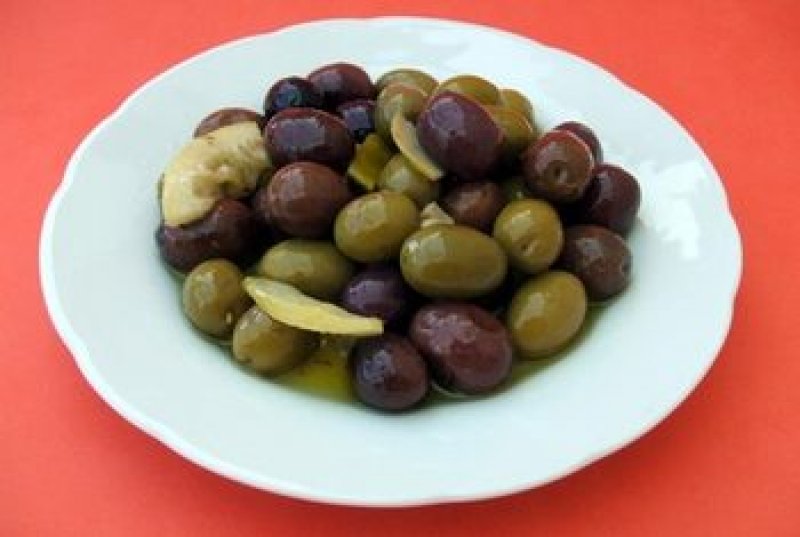The sodium used to brine and preserve the olives is one reason why they add such a bold taste to certain foods. Sodium and salt are not interchangeable terms, and there are 2,325 milligrams of sodium in 1 teaspoon of salt. The amount of sodium in olives is a significant portion of the amount you need for the entire day, which means that you should limit how many you eat.
Sodium
The majority of the salt in your diet probably comes from added sodium, whether it's from the salt shaker or from preserved and packaged food. Sodium is an essential mineral that helps transmit nerve impulses and keep your muscles working properly, but you don't need much to keep your body healthy. Too much sodium can contribute to an increased risk of certain health problems such as water retention and stroke. A 2004 article published in "Hypertension," a journal from the American Heart Association, reports that salt can cause damage to the kidneys, which can lead to kidney disease and kidney failure. A 2000 article, also published in "Hypertension," notes that too much salt can increase your blood pressure, which puts you at a higher risk for developing heart disease.
Limits
You've probably heard that you should limit how much salt you eat, but the average diet still contains about 3,400 milligrams of sodium, according to the Mayo Clinic. This is about 1,100 milligrams more than the upper limit of 2,300 milligrams recommended for healthy adults. It's about 1,900 milligrams more than the upper limit of 1,500 milligrams recommended for African-Americans, people over the age of 50 and those already diagnosed with heart disease or high blood pressure. This 1,500-milligram limit is equal to about 2/3 teaspoon of salt.
Olives
The problem with olives is that one tiny olive contains a large amount of sodium, but not many people can stop with just one. One large, black olive contains 32 milligrams of sodium. A 1/2-cup serving of black olives contains about 735 milligrams of sodium or about 1/3 teaspoon of salt. Two green olives, which are equal to about one black olive in serving size, contain 42 milligrams. A 1/2-cup serving of green olives contains about 1,556 milligrams of sodium. This is equal to just over 2/3 teaspoon of salt.
Eating Olives
Olives contain heart-healthy unsaturated fats, so they can have an occasional place in your diet as long as you don't go overboard. Many large supermarkets stock reduced-sodium or low-salt canned or jarred olives; those varieties are healthier options than traditional versions. Chop three or four olives and sprinkle them over a serving of pasta salad or onto a slice of cheese pizza. Use three or four chopped olives to enhance the flavor of tacos, tostadas or enchiladas. Combine chopped olives with capers and minced garlic and use the mixture as a bold topping for grilled chicken or pork chops.
Source: http://healthyeating.sfgate.com/much-salt-olives-4964.html


